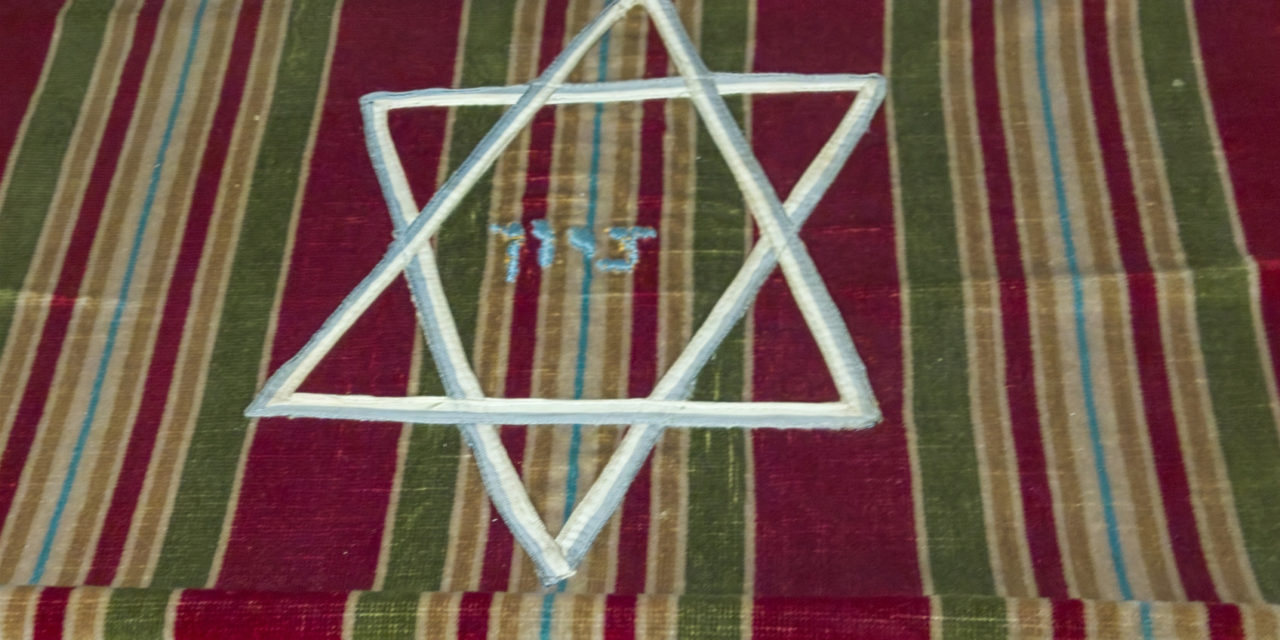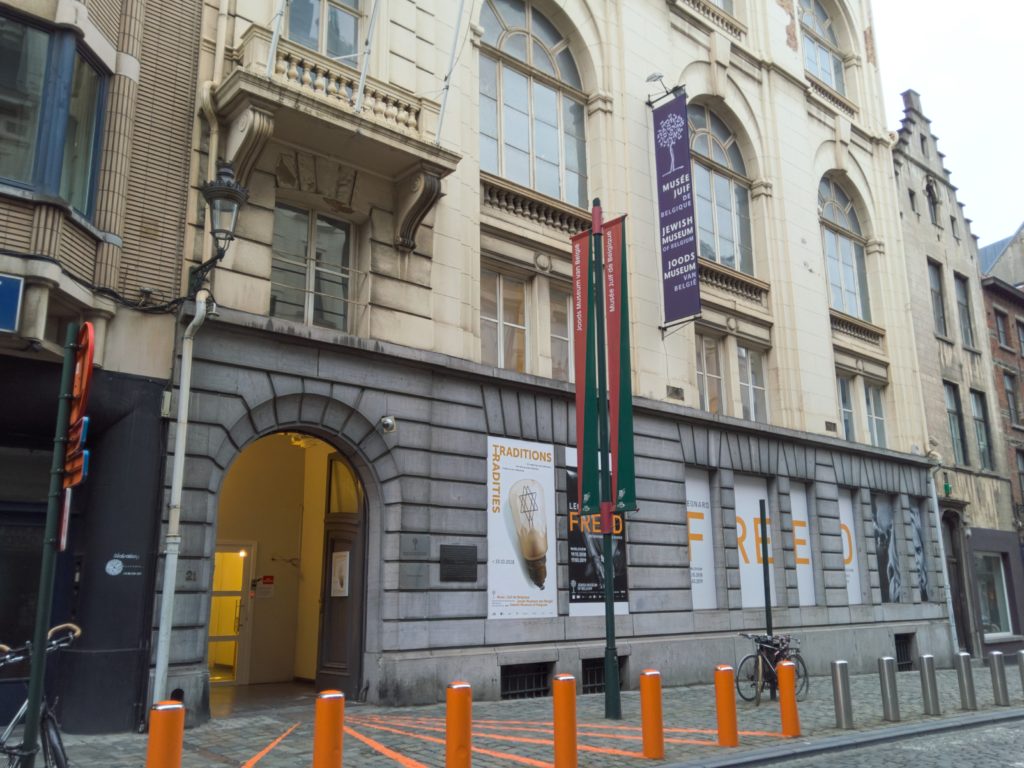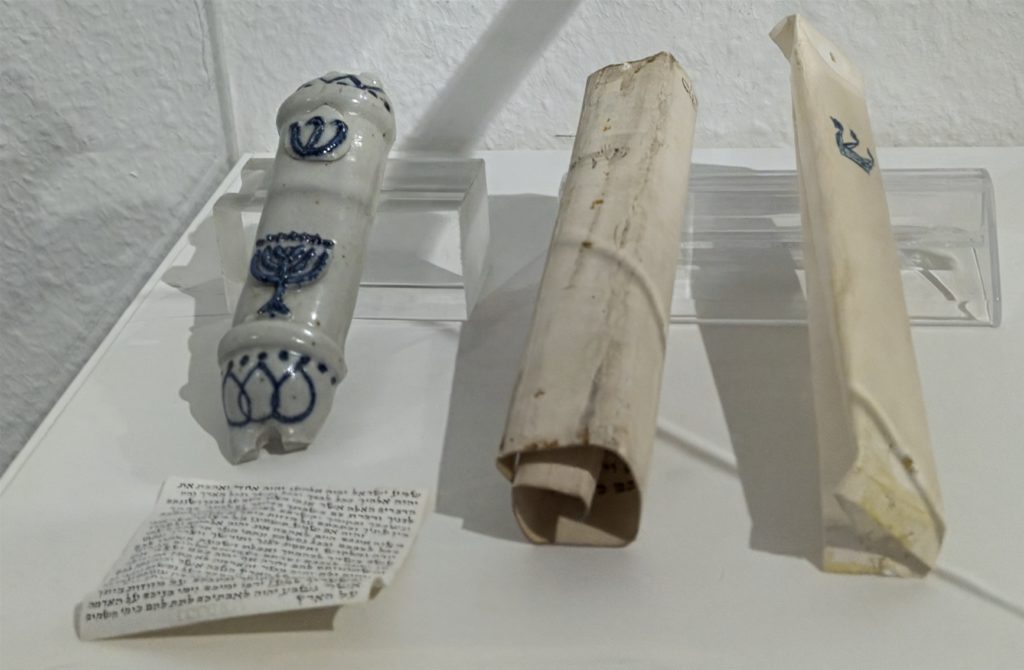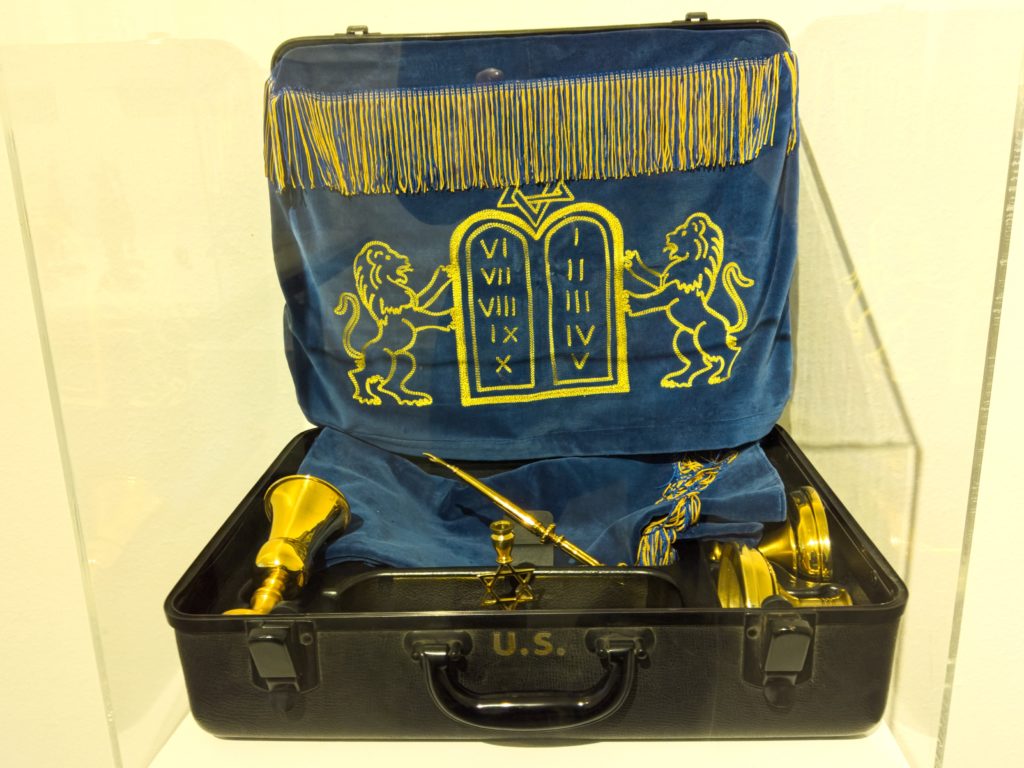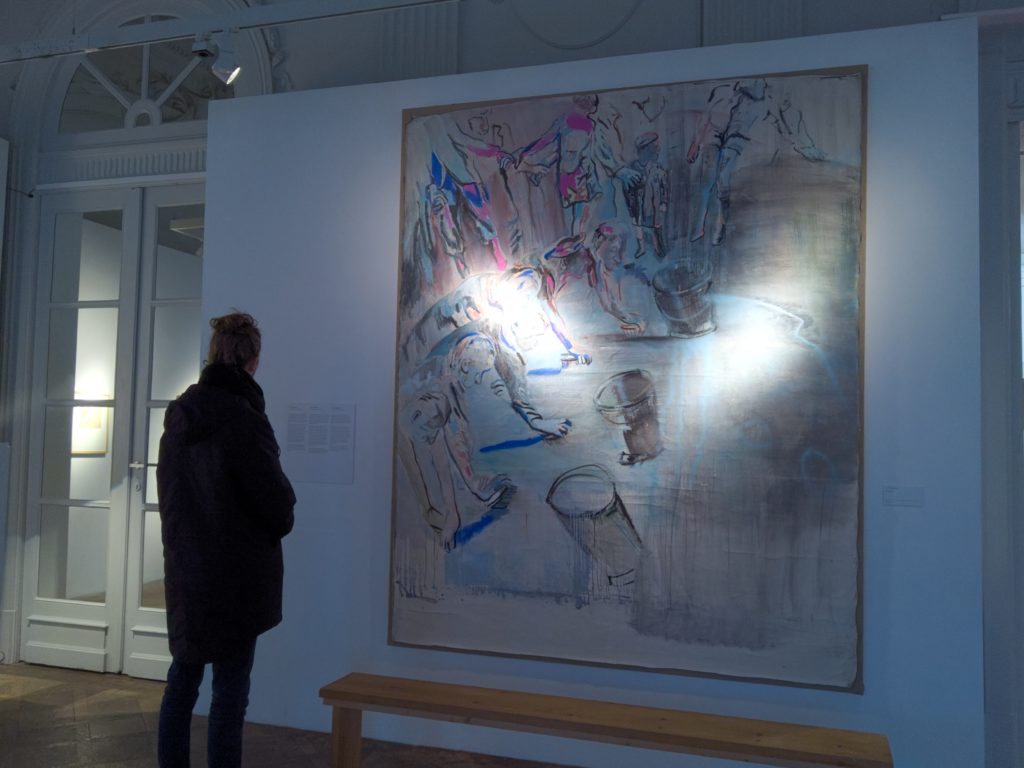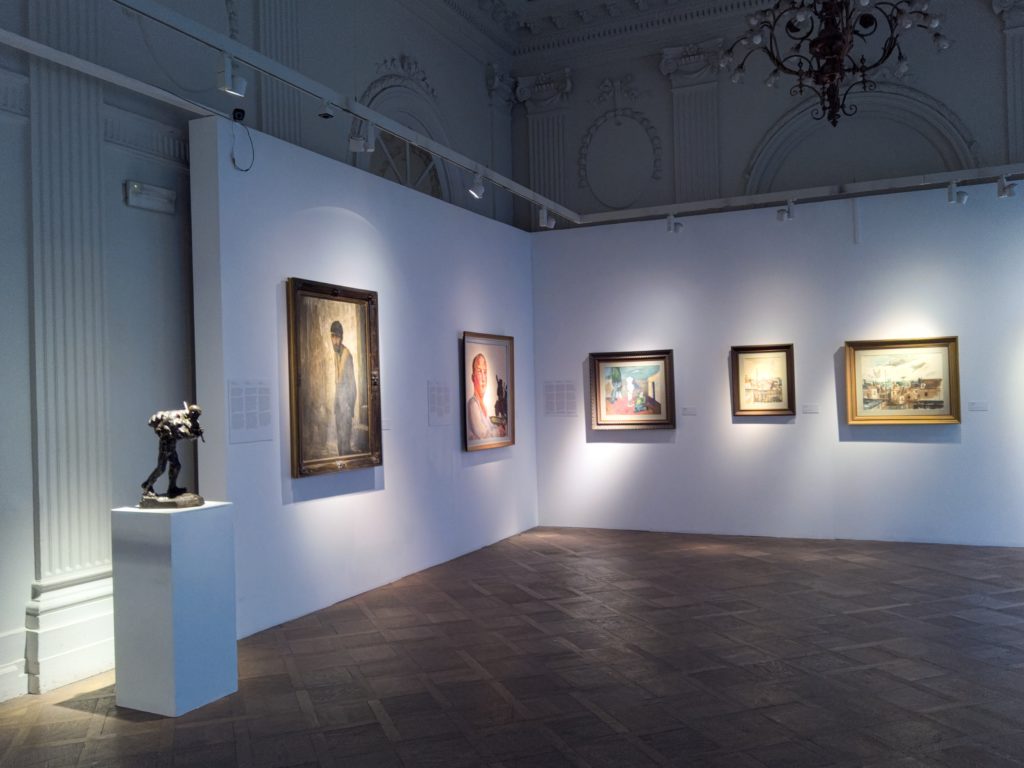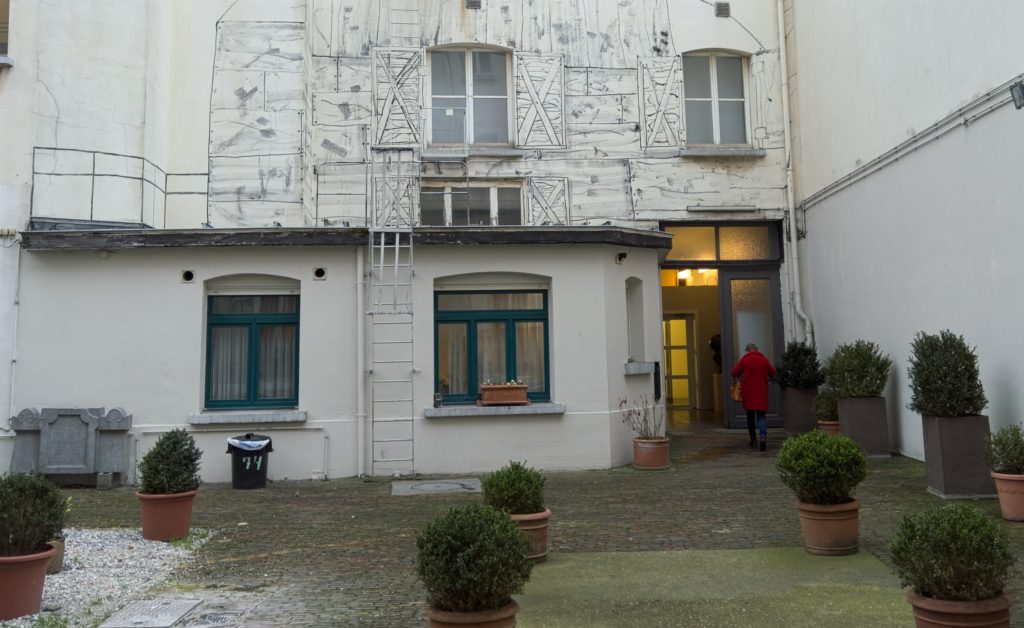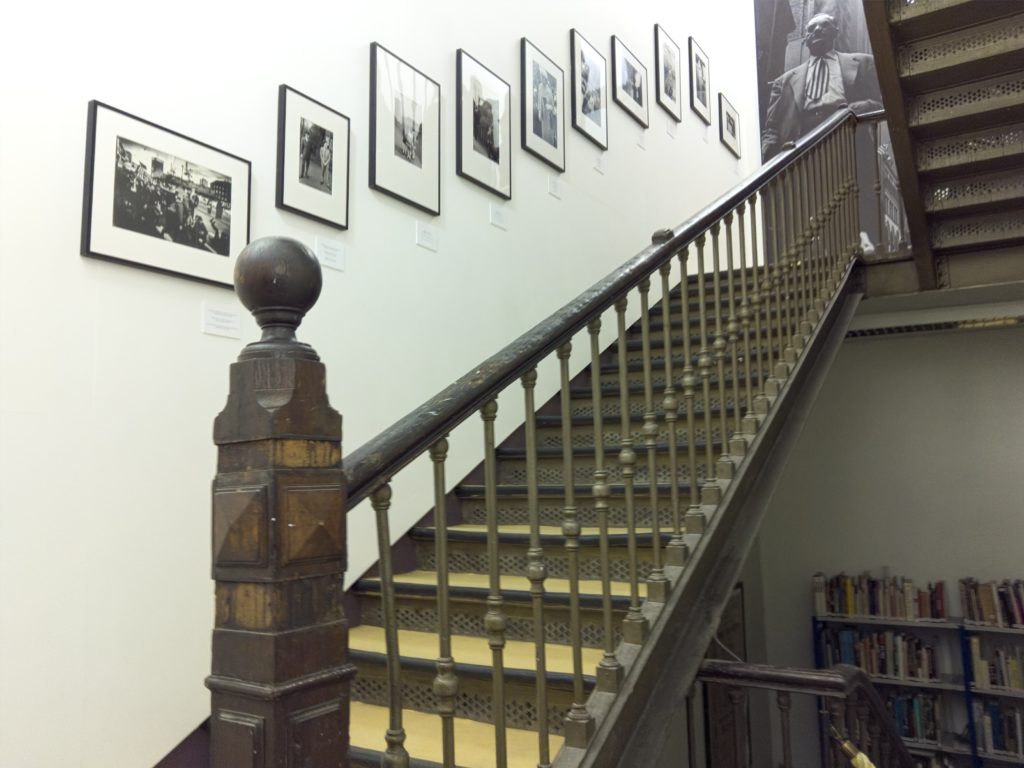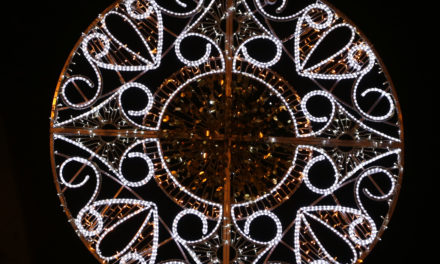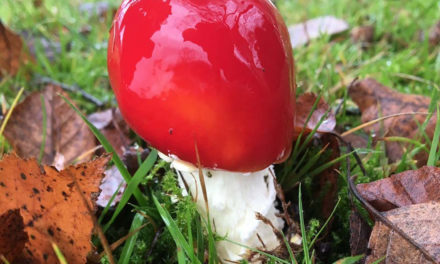The Jewish Museum of Belgium has been on my bucket list for a few years. Conceived about 30 years ago, the museum’s goal is to introduce Jewish culture, religion and history and encourage dialogue. When one of my photography groups scheduled a visit to the museum, I jumped at the opportunity. In addition to the main museum, there was a special exhibition: Leonard Freed, Worldview: Photographing the World Disorder exhibition, which runs through March 17, 2019.
Tight Security
Our group met outside the front entrance, and security was tight. That’s no surprise given the rise in anti-Semitism throughout the world.
In October 2018, the heinous slaughter of 11 Jews attending Shabbat services in Pittsburgh, Pennsylvania, rocked the community and the world. Last year, anti-Semitic sentiment in the U.S. rocketed to its highest level in two decades, a shocking 57% compared to the previous year, according to the Anti-Defamation League (ADL). For the first time since 2010, cases were reported in every state of the Union. The ADL statistics on anti-Semitism around the world are equally horrifying.
After being buzzed into the museum, one-by-one, and passing the first security check and screening, we were buzzed through a second door. The main museum was still one security door ahead.
Open Minds and Open Dialogues
Places like the Jewish Museum of Belgium are vitally important for better understanding between people of different backgrounds. Walking through the museum, I had the chance to explain Jewish culture to two Muslim and German friends, who were clearly interested in learning about the faith and traditions.
“Can you read Hebrew?” one asked. “Well, if there are vowels,” I answered, a bit embarrassed that I’d lost so much of the language I had learned as a child. But I certainly didn’t forget the traditions, like the mezuzah on my front door. The decorative case, bought in Israel, contains a piece of parchment with Hebrew verses from the Torah.
What Will You Find?
At the museum, you’ll find mezuzahs, ornate havdalah spice boxes, historic candelabras and Hebrew books, and even a portable altar with clothes and religious items used by U.S. Army in Belgium to celebrate the Sabbath and religious days.
The second floor has a replica of a small synagogue in Molenbeek. Religious objects, furnishings and an ark with torahs was donated by the Kilmnik family and synagogue members after the house of worship closed in 2002 due to the declining Jewish population.
Belgian Jewish Artists
The third floor of the museum houses a small collection of art in a ornate room with crystal chandeliers. Everything was created by Belgian Jewish artists.
The gallery room served as the festival hall of the German school that once occupied the building. Sculptures and paintings depict challenges and horrors faced by Jews — immigration, exile, the Holocaust memories and annihilation of families — from a painting by Kurt Peiser that depicts a Jewish man in an urban landscape in the early 1900s to a 1995 piece by Sarah Kaliski that shows humiliations inflicted on Jews in Vienna in 1938.
Six Floors of History
The Jewish Museum has six floors celebrating Jewish heritage and tradition. Three floors are currently open in the main museum, and a contemporary building behind the small courtyard hosts special exhibitions. In May, the main building will add three floors celebrating Moroccan Jews.
After a walk through the main museum, don’t miss the special exhibition building, a quick walk across the outdoor terrace.Don’t worry if it is raining. The museum has provided a basket of umbrellas to keep you dry as you traverse the courtyard.
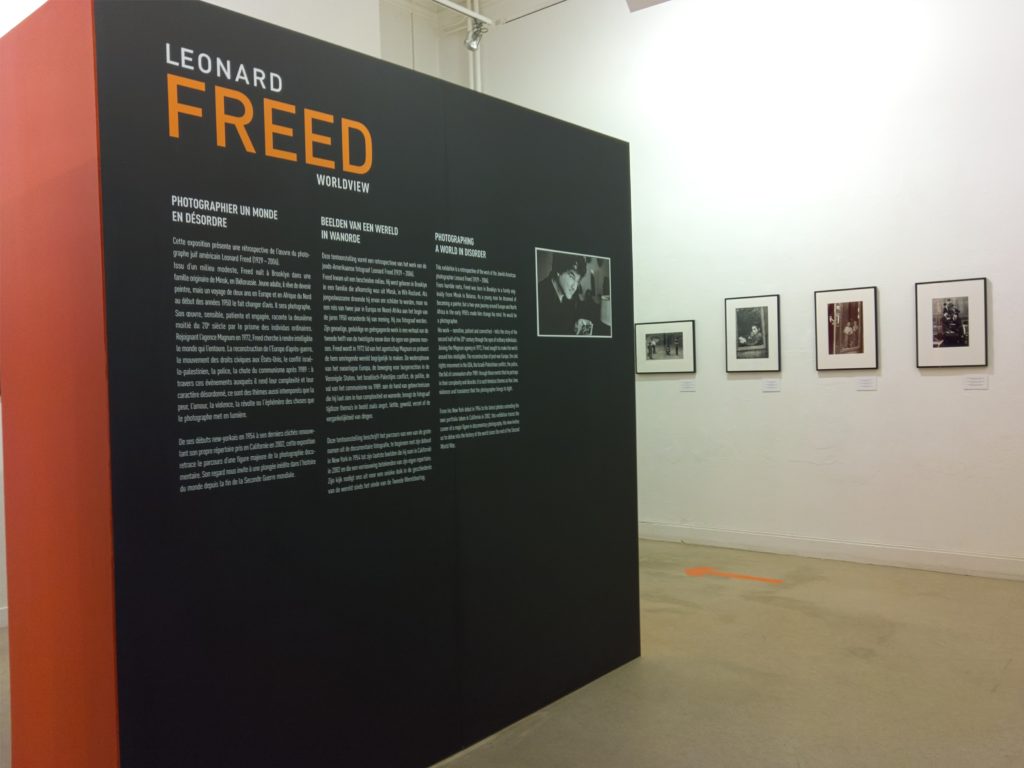
American documentary photojournalist Leonard Freed’s photos capture the spirit of the second half of the 20th century.
A Picture Is Worth a Thousand Words
For anyone interested in photography or history, Leonard Freed’s Worldview exhibition is a must see. The Jewish documentary photojournalist, from Brooklyn, New York, discovered his passion for photography while living in the Netherlands in the 1950s and photographing the Jewish community there. He captured the pulse of society as he explored the world through photography.
“Ultimately, photography is about who you are,” he said. “It’s the seeking of truth in relation to yourself. And seeking truth becomes a habit.”
Freed photographed blacks in America, the Yom Kippur War in Israel and the New York City Police Department. His black and white photographs evoke strong emotions, from the everyday life of the Hasidic Jew to children playing in the water of a fire hydrant in Harlem, New York, to a close-up up of Martin Luther King on the day of his famous “I Have a Dream” speech.
Museum Details
The Jewish Museum of Belgium is located at Rue des Minimes 21 in the Sablon district, known for its galleries and antique shops. There are lots of cafes, restaurants and bars in the vicinity for a snack or beverage after your visit.
Admission to the museum and exhibition is 10 euros for adults; 7 euros for students, people over 60 and groups of 10 or more. Admission is free for children under 12. On the first Sunday of the month, there is no admission charge to the main museum, but the entrance fee applies for the special exhibitions. Entrance is also free with a Brussels Card.

